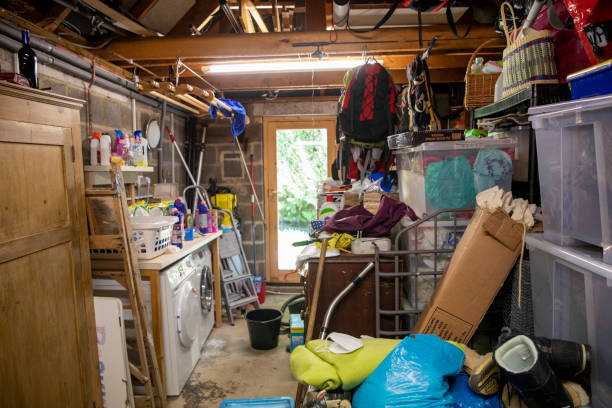In today’s materialistic world, many of us find ourselves surrounded by an abundance of belongings. However, embracing a minimalist mindset can help bring clarity and contentment into our lives. The purpose of this step-by-step guide is to provide you with practical tips and strategies to let go of material possessions, allowing you to create space for what truly matters.
Throughout this guide, we will explore the emotional attachment we often have to our belongings and learn how to detach from them with empathy. By following these steps, you will be able to declutter your physical space, simplify your life, and ultimately experience the freedom and peace that comes with letting go.
Assess your possessions
To assess your possessions, start by taking inventory of all your material belongings. Go through each room in your house and make a list of everything you own, from furniture and appliances to clothing and electronics. Once you have your list, evaluate the importance and relevance of each item in your life. Consider whether it brings you joy, serves a practical purpose, or holds sentimental value. This exercise will help you identify the items that truly matter and those that you can let go of.
Set goals and priorities
Identify your personal values and priorities to determine what items are essential to keep and what can be let go. Start by making a list of your core values and what truly matters to you in life. Then, assess your belongings and commitments based on these values and prioritize them accordingly. For example, if spending quality time with family is a top priority, consider letting go of unnecessary work commitments or material possessions that do not align with this value. By aligning your choices with your values, you will be able to set goals and priorities that are meaningful and fulfilling.
Declutter one area at a time
To begin decluttering, choose one specific area, whether it’s a room, a closet, or a category of items like books or clothes. Start by sorting the items into different piles: keep, donate, sell, or discard. Be decisive and try to make quick decisions about what to keep and what to let go of. Once you’ve finished decluttering one area, move on to the next and repeat the process.
Create a decluttering system
To establish a system for organizing and storing your possessions, start by using storage bins. Sort your items into categories and place them in labeled bins for easy identification. Additionally, consider using digital solutions such as creating a spreadsheet or inventory app to keep track of your belongings. This will help you maintain a clutter-free space and make it easier to find what you need when you need it.
Practice detachment
To develop a mindset of detachment from material possessions, it is important to recognize that they do not determine your worth or happiness. Begin by reflecting on the fact that your value as a person is not tied to the things you own. Remind yourself that true fulfillment and contentment come from within, rather than from external objects. For example, instead of seeking validation through expensive clothes or luxury items, focus on cultivating meaningful relationships, pursuing personal growth, and engaging in activities that bring you joy and fulfillment. Practice gratitude for what you already have and learn to let go of attachments to material possessions. This can be done by decluttering your living space, donating or selling items you no longer need, and focusing on experiences rather than acquiring more stuff.
Let go emotionally
To address any emotional attachments or sentimental feelings associated with items, follow these steps:
- Reflect on the item’s significance: Take a moment to understand why the item holds such emotional value for you. Consider the memories, people, or experiences attached to it.
- Assess the impact on your emotional well-being: Evaluate whether holding onto the item brings you joy or if it triggers negative emotions like sadness or guilt. Recognize that letting go of emotional attachments can contribute to a sense of lightness and freedom.
- Create distance: Begin detaching from the item by physically separating yourself from it. Put it in a storage box or move it to a different location. This step helps to create a mental and emotional separation as well.
- Find alternative ways to preserve memories: Instead of keeping physical items, explore other ways to hold onto the memories. Consider taking photographs, writing in a journal, or creating digital albums to capture the essence of those sentimental moments.
Remember, the process of letting go emotionally takes time and patience. Give yourself permission to feel the emotions that arise during this process, and be gentle with yourself as you gradually detach from the sentimental attachments.
Donate or sell unwanted items
Find appropriate outlets to donate or sell the items you no longer need. Here are some options:
- Local Charities: Research local charities in your area that accept donations. Goodwill, Salvation Army, and Habitat for Humanity are popular choices. Contact them to inquire about their donation policies and drop-off locations.
- Online Marketplaces: Consider selling your items on popular online marketplaces such as eBay, Craigslist, or Facebook Marketplace. Take clear photos of your items, write detailed descriptions, and set a reasonable price. Arrange for safe and convenient pick-up or shipping options.
- Garage Sales: Organize a garage sale to sell multiple items at once. Advertise your sale in local newspapers, online classifieds, or community bulletin boards. Price your items competitively and have a plan for handling cash transactions. Arrange your items attractively and be prepared to negotiate with potential buyers.
Remember, before donating or selling your unwanted items, ensure that they are clean, in good condition, and still usable. Consider the specific requirements and restrictions of each outlet to ensure a smooth process. By finding appropriate outlets, you can declutter your space while also giving your unwanted items a new lease on life.
Minimize future accumulation
To minimize future accumulation, adopt habits that prevent unnecessary acquisition of new possessions. Implement a one-in-one-out rule, where for every new item you bring into your space, you must remove one item. This ensures that your possessions remain in balance and prevents unnecessary clutter. Additionally, practice mindful purchasing by carefully considering each new item before buying. Ask yourself if it truly adds value to your life and if you really need it. By adopting these habits, you can maintain a clutter-free environment and prevent future accumulation of possessions.
Embrace a minimalist lifestyle
Embrace the benefits of living with fewer material possessions to experience a more focused and stress-free life. Start by decluttering your living space, one room at a time. Donate or sell items that no longer serve a purpose or bring you joy. As you create a more minimalist environment, you will find yourself feeling lighter and freer, with more mental clarity and the ability to prioritize what truly matters.
Maintain regular decluttering
- Assess your possessions regularly to determine which items are necessary and which can be decluttered.
- Develop a system for decluttering that works for you, whether it’s tackling one room at a time or focusing on specific categories of items.
- Set aside dedicated time to declutter on a regular basis, whether it’s once a week, once a month, or a schedule that works best for you.
- Be honest with yourself about what you truly need and use, and let go of items that no longer serve a purpose in your life.
- Donate or sell items that are in good condition but no longer needed, and properly dispose of any items that are broken or unusable.
- Avoid bringing unnecessary items into your home by being mindful of your purchasing habits and considering the long-term value of each item before making a purchase.
- Remember that decluttering is an ongoing process, and it’s important to continue to assess and declutter as needed to maintain a clutter-free and minimalist environment.
Benefits of Minimalism
In conclusion, letting go of material possessions is a powerful step towards embracing a minimalist mindset and lifestyle. Throughout this guide, we explored various strategies and techniques to help you effectively release the attachment to your belongings. By understanding the true value of experiences and relationships over material things, we can free ourselves from the burden of excessive possessions and cultivate a sense of liberation and contentment. Remember, the journey towards letting go is a personal one, but the rewards are immense. Start small, be patient with yourself, and embrace the freedom that comes with a clutter-free life. Letting go is not just about decluttering our physical spaces, but also about decluttering our minds, allowing us to focus on what truly matters. So, take a deep breath, let go, and embark on this transformative journey towards a more minimalist and fulfilling life.
Practical Advice
Getting Started with the Minimalist Mindset
- Start decluttering: Begin by going through your belongings and getting rid of things that you no longer need or use. This will help create a more organized and simplified space
- Focus on essentials: Adopt a mindset of prioritizing only the things that bring value or joy to your life. This means being mindful of your purchases and only acquiring items that serve a purpose or truly make you happy
- Limit distractions: Reduce the amount of time spent on screens and social media, as well as the number of commitments or activities that may be overwhelming. By limiting distractions, you can free up time and mental space for more meaningful experiences
- Embrace simplicity: Simplify your daily routines, tasks, and even your goals. Instead of multitasking or trying to do it all, focus on accomplishing one thing at a time and doing it well. This will help reduce stress and increase your overall productivity
- Practice gratitude: Cultivate a sense of gratitude for the things you already have, rather than constantly seeking more. By appreciating what you have, you can find contentment in the present moment and avoid the desire for excessive material possessions

